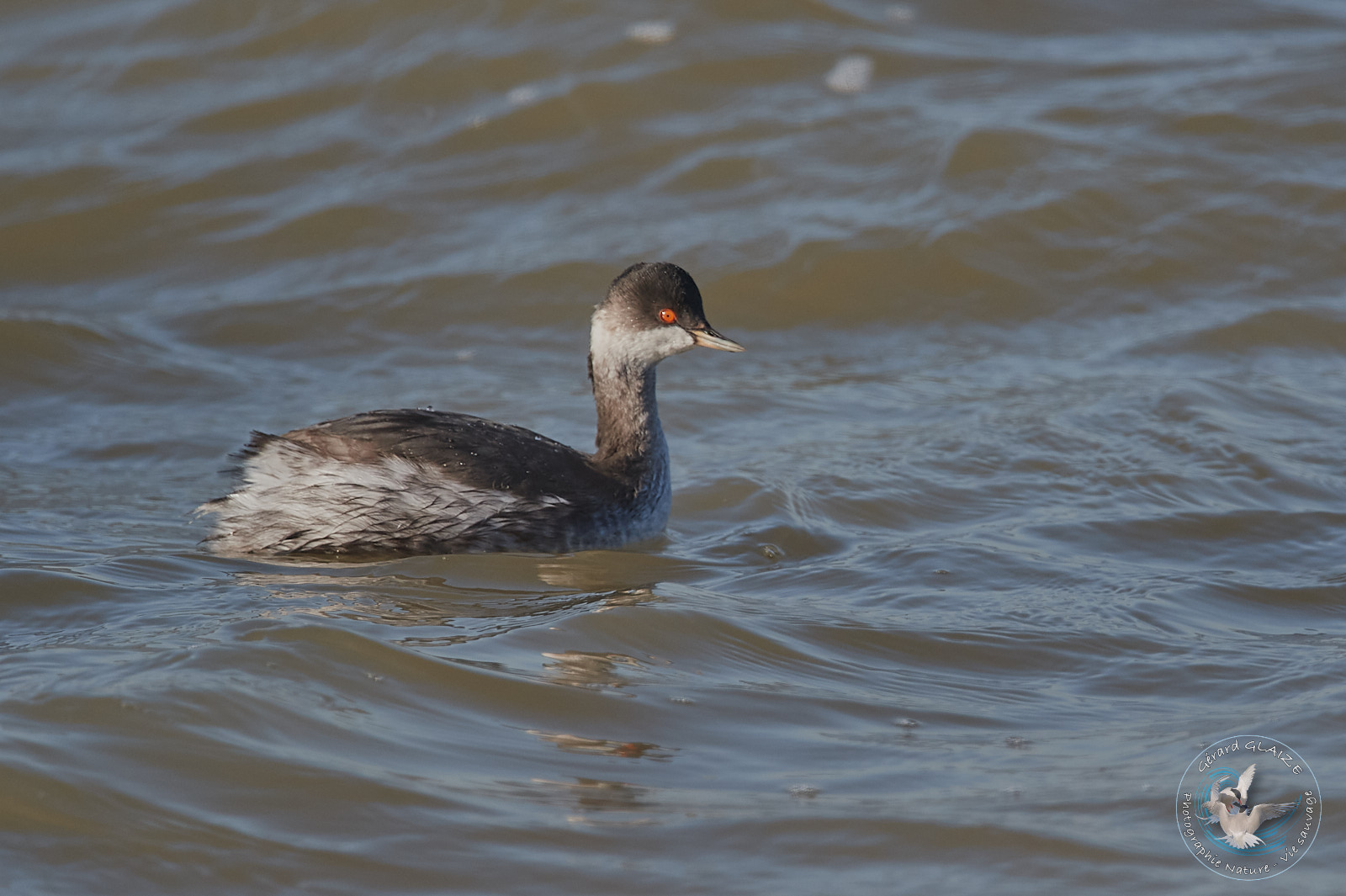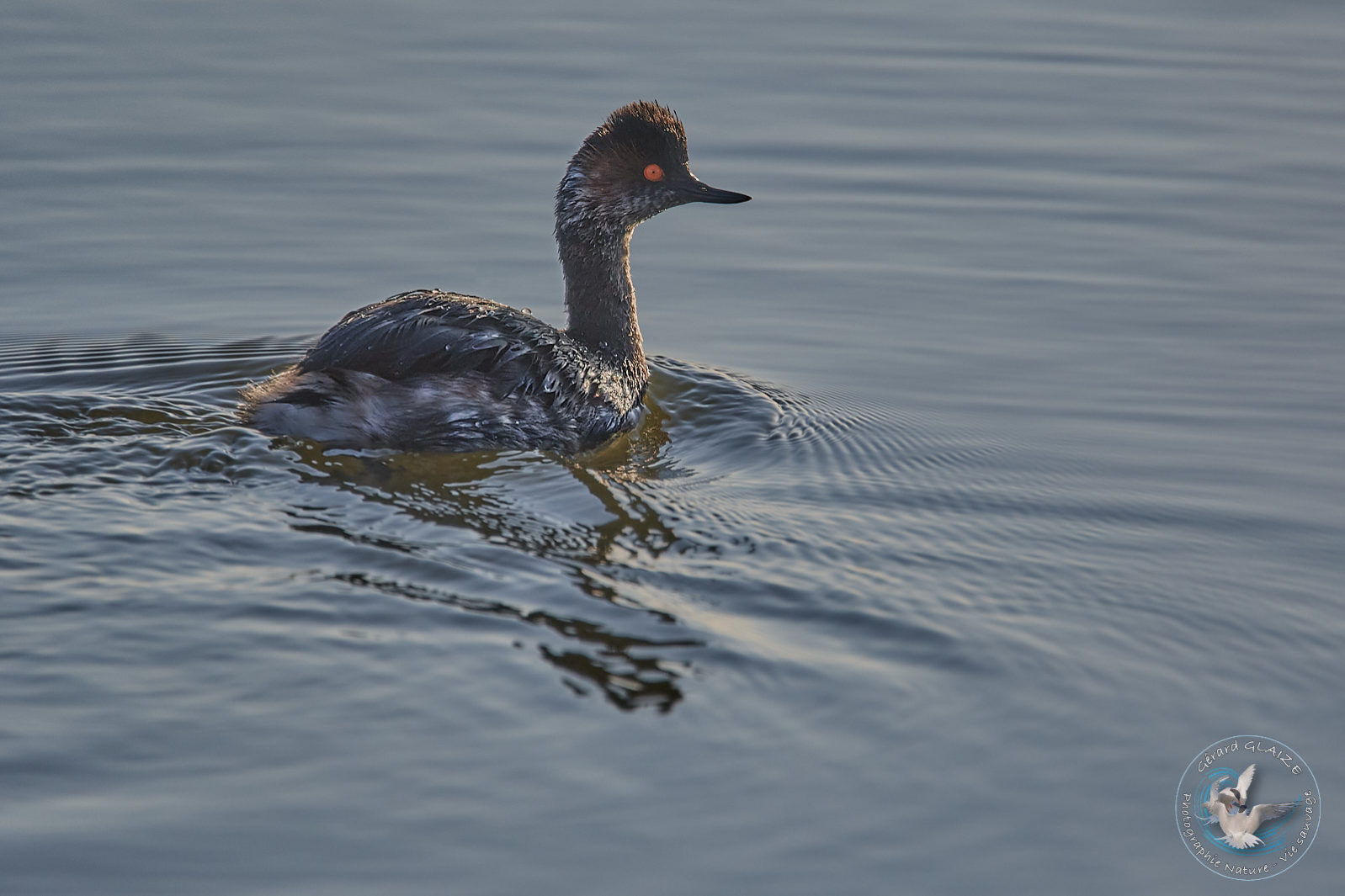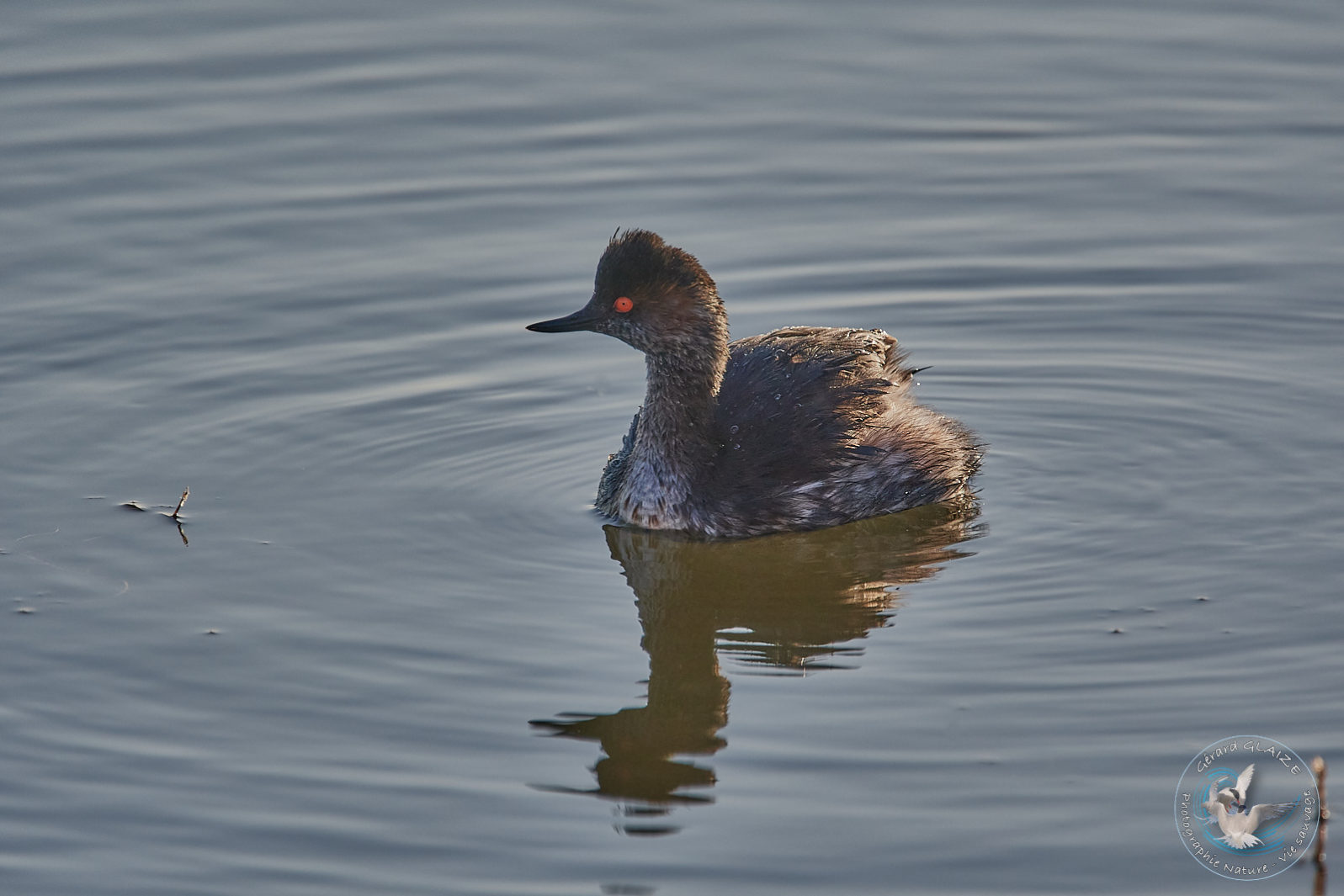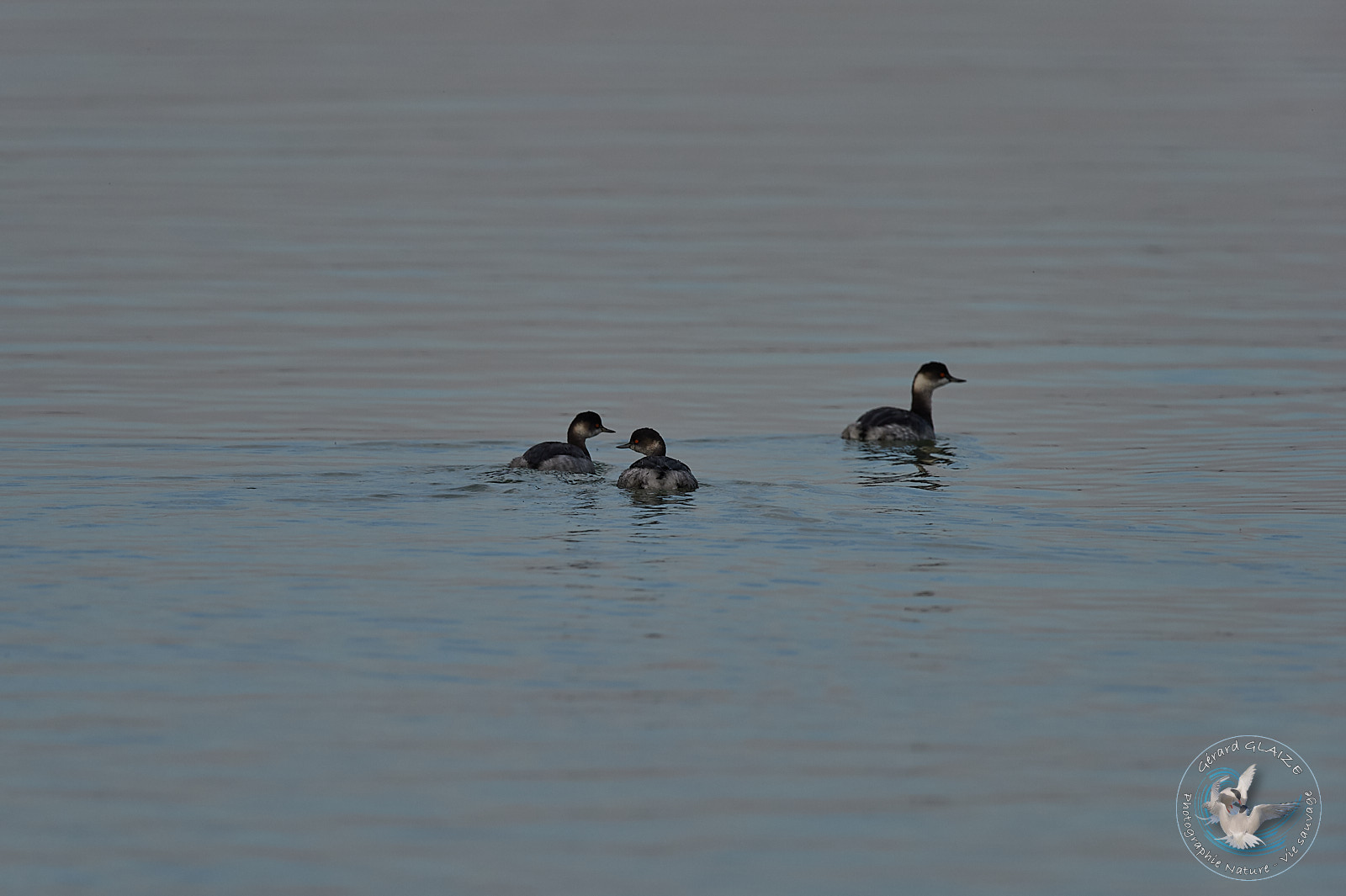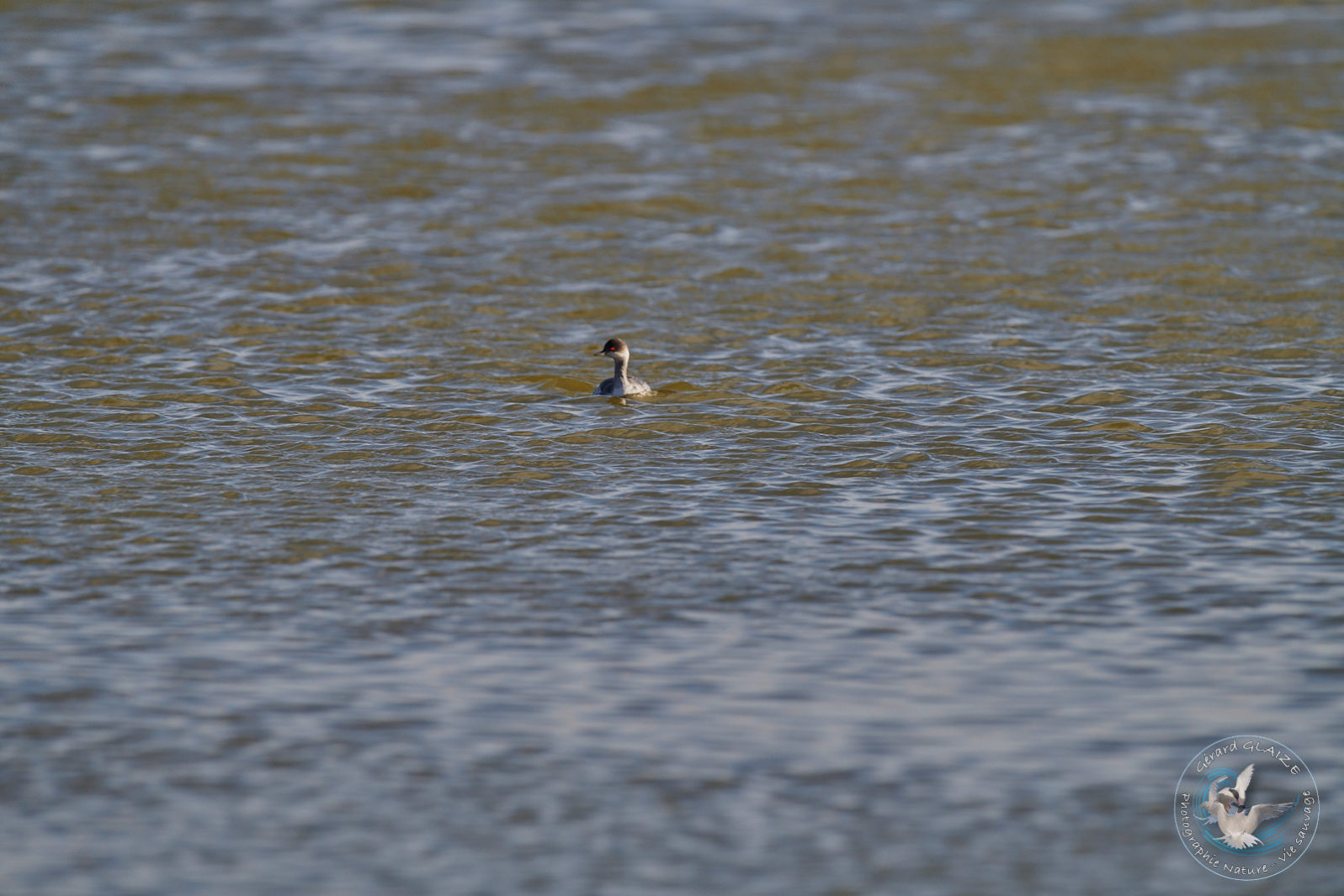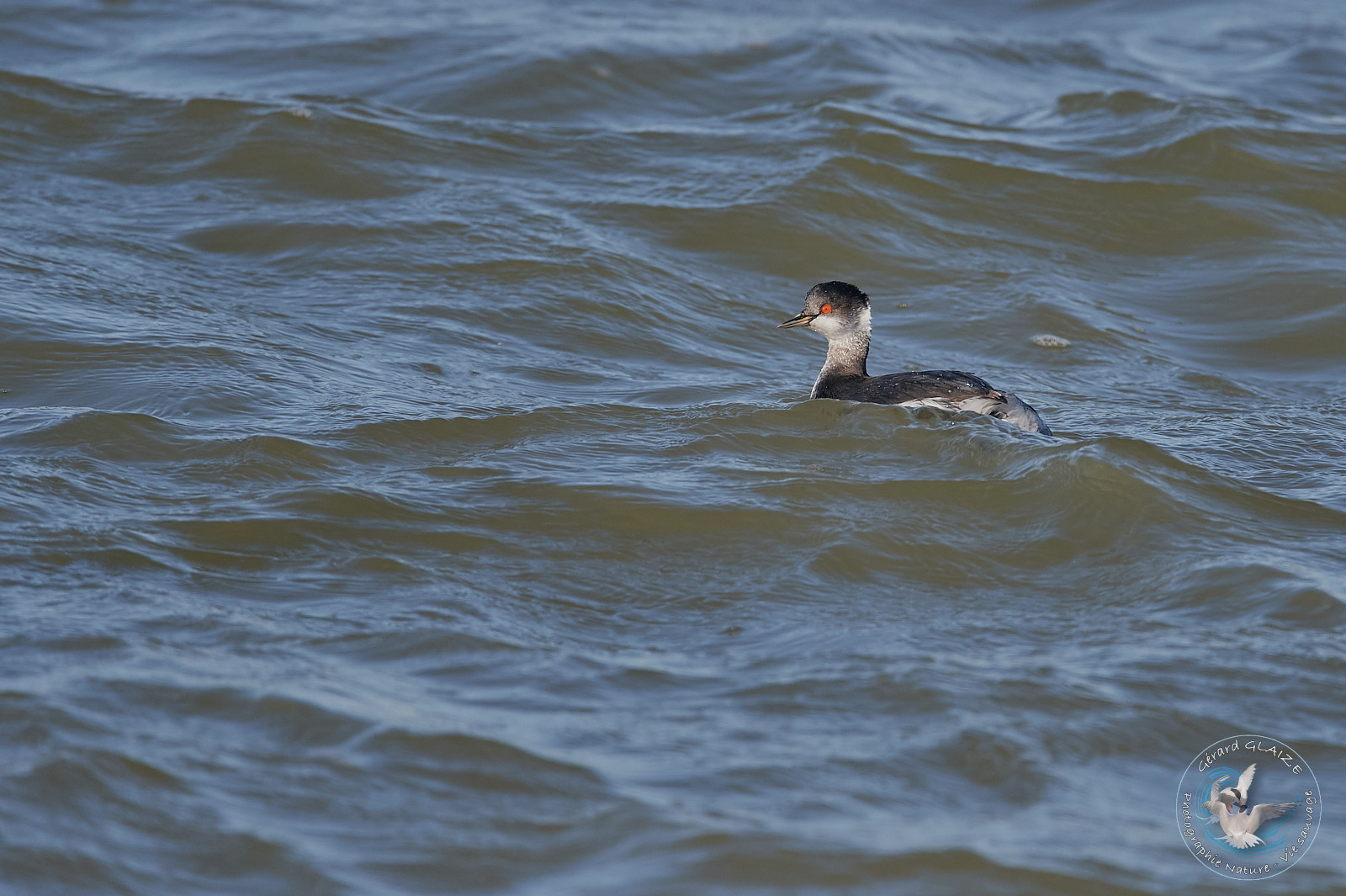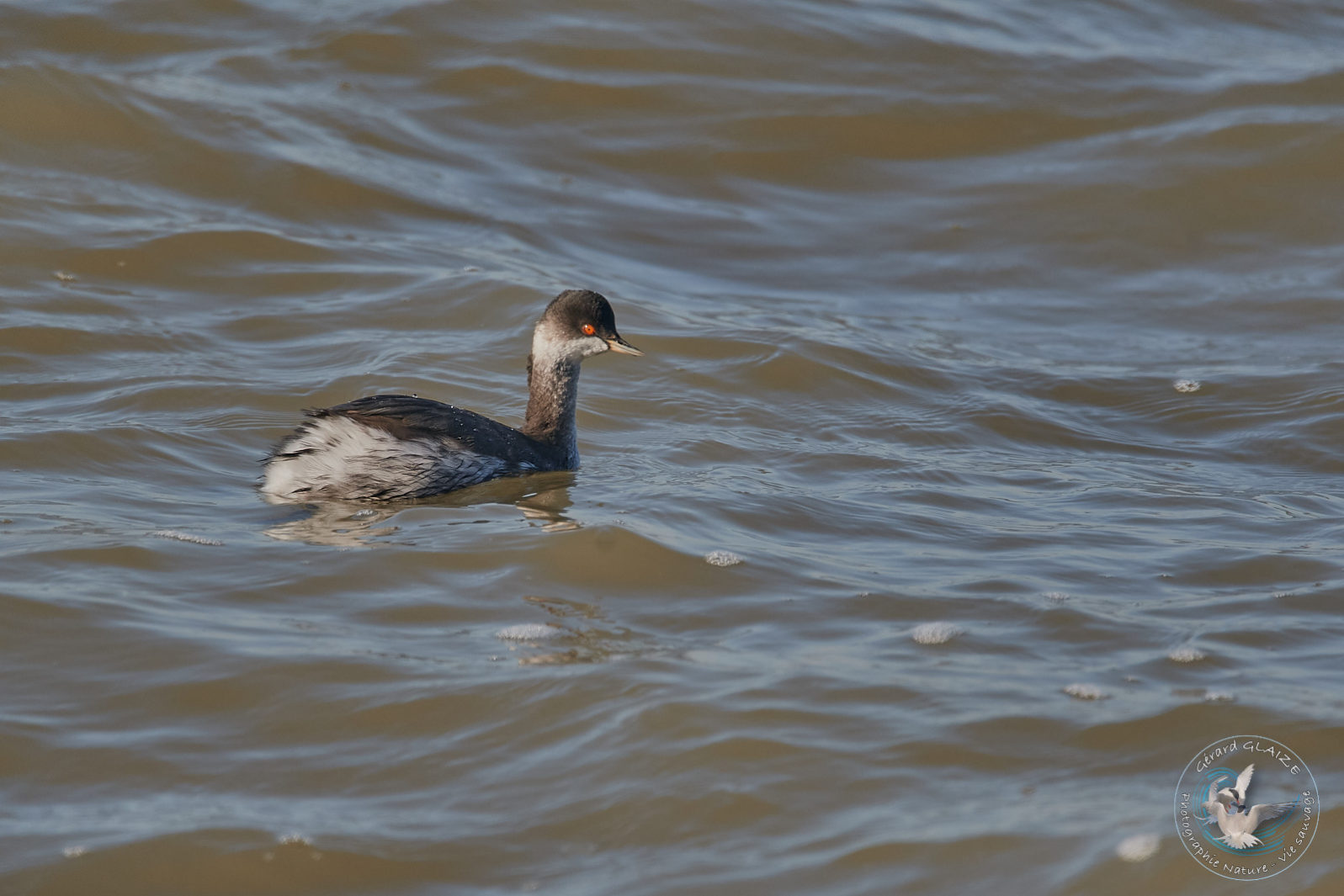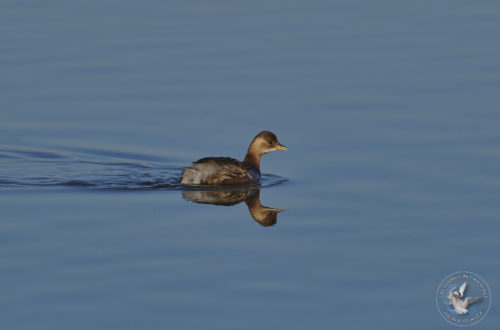Black-necked Grebe
Black-necked Grebe has a slightly upturned bill that is thinner than that of its cousin, the Horned Grebe. This beak is, moreover, entirely black. Like all grebes, the Black-necked Grebe has greenish legs. They are positioned far back on the body, which makes swimming easier, and its toes are lobed. The eye is red in adults. The Black-necked Grebe with a rounded and stocky body is an intermediate size between the Great Crested Grebe and the Little Grebe.
During the breeding period, it is recognizable thanks to the fiery red of its sides but also thanks to the tufts of golden feathers which can fan out on the sides of its head. The red iris is very clearly visible against the entirely black background of the head. Neck and back are also deep black. The black crown of the head is often more domed than in other grebes. Winter plumage is dull. The back, back of the neck and crown are black. The sides, belly, chest, throat and cheeks are more or less light gray. However, the bottom of the cheeks is white.
Black-necked Grebe
Scientific name : Podiceps nigricollis
Family : Podicipedidae
Length: from 28 cm to 34 cm – Wingspan: from 52 cm to 60 cm
Weight : from 250 gr to 350 gr
IUCN Conservation Status: LC
Flight
However, due to the position of its legs, far behind the body, it is easier for it to swim than to walk or take off. For this reason, it rarely flies outside of migration periods. This way, he will avoid venturing onto the banks as much as possible.
In flight, it holds its neck outstretched and its semi-webbed legs hanging slightly. Although the wings beat quickly, the flight is generally low and not very powerful..
Habitat
In summer, it frequents medium-sized freshwater bodies rich in aquatic vegetation. It is often seen in the company of colonies of black-headed gulls. However, it prefers bodies of water with abundant vegetation on its banks and abundant aquatic fauna. In winter, however, it is most often encountered in lakes, large ponds and estuaries. During this season it also frequents the sea coast. It often mixes with other grebes during wintering.
Regime – Diet
The Black-necked Grebe feeds in summer on insects caught on the surface, but also on aquatic insects (adults and larvae), tadpoles, small fish, molluscs and small crustaceans. The Black-necked Grebe pursues small fish with skill. For this it can descend up to three meters deep, finally reappearing at a fairly large distance from the diving point, half a minute after its immersion. In winter, its diet is more strictly piscivorous. It swallows its prey underwater, unlike the Little Grebe which consumes its prey on the surface.
Nesting
The pairs, which formed on the wintering sites, arrive at the nesting sites around March or April. Nesting often takes place in small colonies of up to a few hundred pairs. The couples then begin a courtship display. They stand up chest to chest, swim around each other with their bodies extended, shake their heads, and rush at other couples to intimidate them.
Both parents build a nest made of a pile of decomposing plants anchored to living vegetation at the water’s edge. Laying takes place between March and July. Male and female incubate 3 to 4 bluish-white eggs which will turn brown on contact with decomposing plants and which hatch after 19 to 23 days of incubation. Nestlings are precocial and often carried on the backs of their parents. They will be independent after 3 to 4 weeks. They will become capable of reproducing at the age of 2 years.
Protection
Considered secure in Europe by the European Environment Agency (EEA) since 1994, this species has still been declared threatened in Sweden, and vulnerable in Germany, Latvia and Lithuania.
Protected species (Article 1 and 5 of the amended decree of April 17, 1981), included in Appendix II of the Berne Convention and listed in category C1 of the AEWA (populations of southern and western Europe and northern of Africa).
Song
The Black-necked Grebe emits very high-pitched trills (bibibib) and whistles (houiiti) in summer. However in winter it is generally quiet.


